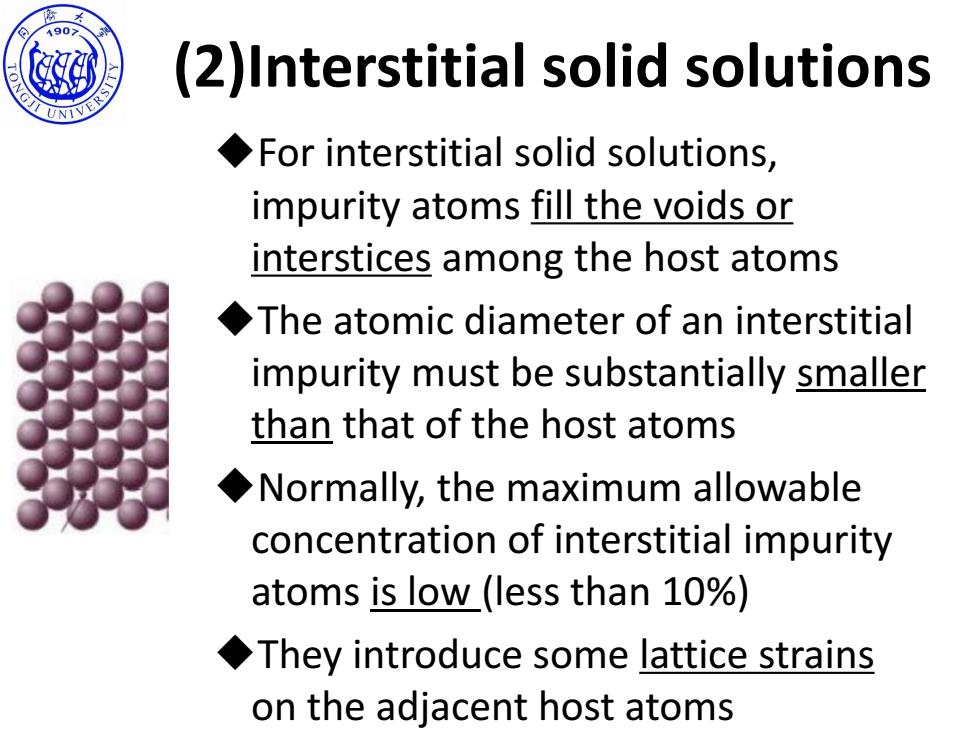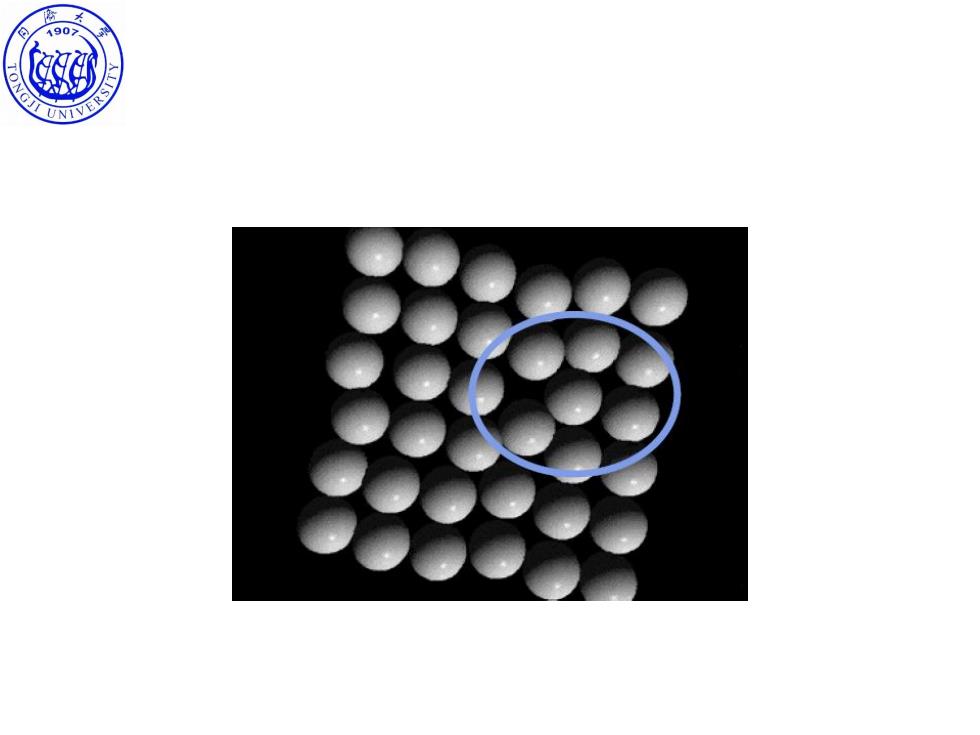
190> (2)Interstitial solid solutions G For interstitial solid solutions, impurity atoms fill the voids or interstices among the host atoms The atomic diameter of an interstitial impurity must be substantially smaller than that of the host atoms Normally,the maximum allowable concentration of interstitial impurity atoms is low (less than 10%) They introduce some lattice strains on the adjacent host atoms
(2)Interstitial solid solutions For interstitial solid solutions, impurity atoms fill the voids or interstices among the host atoms The atomic diameter of an interstitial impurity must be substantially smaller than that of the host atoms Normally, the maximum allowable concentration of interstitial impurity atoms is low (less than 10%) They introduce some lattice strains on the adjacent host atoms

190 Interstitial solid solutions: NGJ example C in y Fe stable between 912 and 1394C Rv-Fe=1.29A,Rc=0.75A△R=42% C to be dissolved in y Fe =2.1%
Interstitial solid solutions: example C in γ Fe stable between 912 and 1394℃ Rγ-Fe =1.29Å, RC=0.75Å ΔR=42% C to be dissolved in γ Fe =2.1%

190 3.1.2 Point defects >The simplest of the point defects is a vacancy, or vacant lattice site,one normally occupied from which an atom is missing >All crystalline solid contain vacancies >The equilibrium number of vacancies N,for a given quantity of material depends on and increase with temperature according to the number of vacancies increases exponentially with temperature
3.1.2 Point defects The simplest of the point defects is a vacancy, or vacant lattice site, one normally occupied from which an atom is missing All crystalline solid contain vacancies The equilibrium number of vacancies Nv for a given quantity of material depends on and increase with temperature according to the number of vacancies increases exponentially with temperature

190> N=total number of atomic sites Q,=energy required for the N,=NEp(-23 formation of a vacancy T=absolute Temperature [K] K=gas or Boltzmann's constant For most metals,the fraction of vacancies N/N just below the melting temperature is on the order of 104,that is,one lattice site out of 10,000 will be empty
SINO-ITALIAN CAMPUS For most metals, the fraction of vacancies Nv /N just below the melting temperature is on the order of 10-4 , that is, one lattice site out of 10,000 will be empty. 𝑁𝑣 = 𝑁𝑒𝑥𝑝(− 𝑄𝑣 𝑘𝑇) N=total number of atomic sites Qv=energy required for the formation of a vacancy T= absolute Temperature [K] K= gas or Boltzmann’s constant

490 LONGJIUNIVERSIY
VACANCY